This year’s Gaussfest was mostly remarkable for forgetting the drum machine. :<




This year’s Gaussfest was mostly remarkable for forgetting the drum machine. :<





For this year’s Gaussfest I decided to make a dub siren and connect it to Odin.
A dub siren is basically a very simple analog synth used to make sound effects for dub reggae. The original ones were a simple circuit with two 555 timers, but there are all sorts of variations on the theme. I was especially impressed by the Rigsmith GS1, which seems to contain some sort of toy sound effect IC.
I’m sure I had something similar mounted on the handlebars of my Raleigh Chopper in the 80s. How hard could it be to build one?
After some Googling and searching eBay, I found a surplus dealer selling some promising looking chips: the HK620 and HK623.
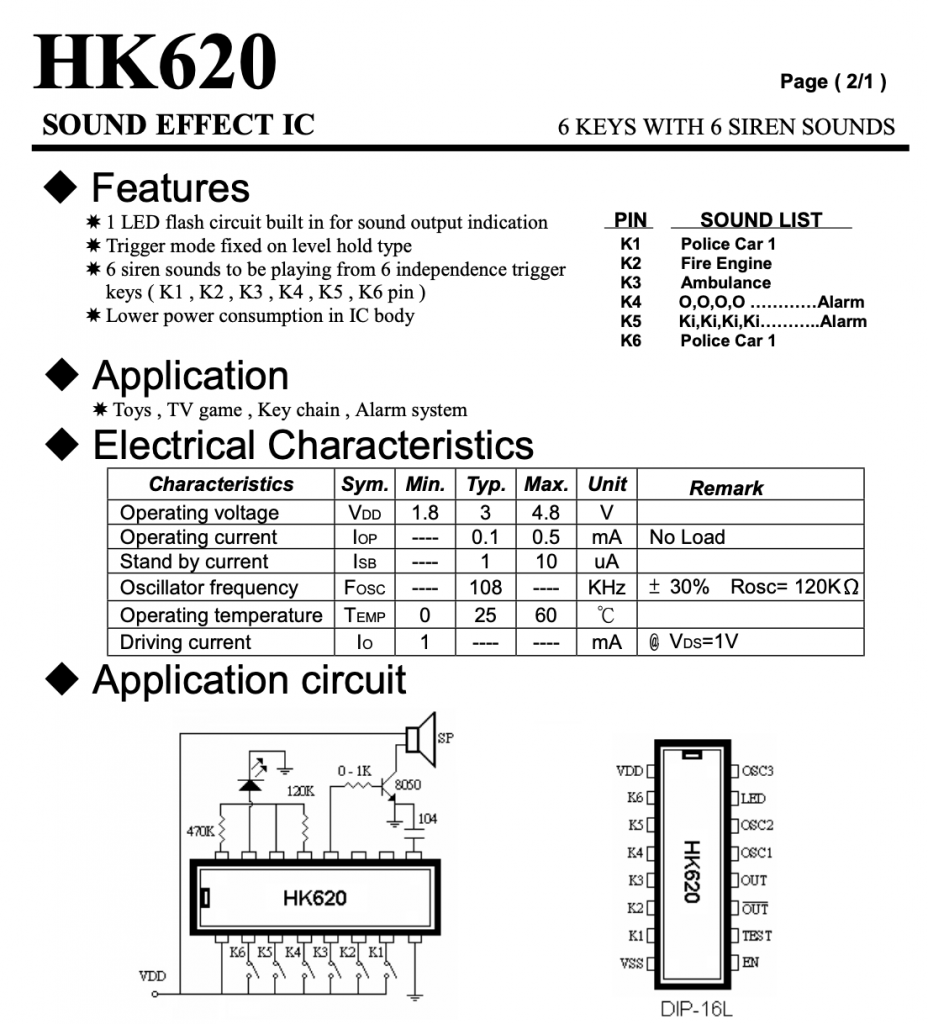
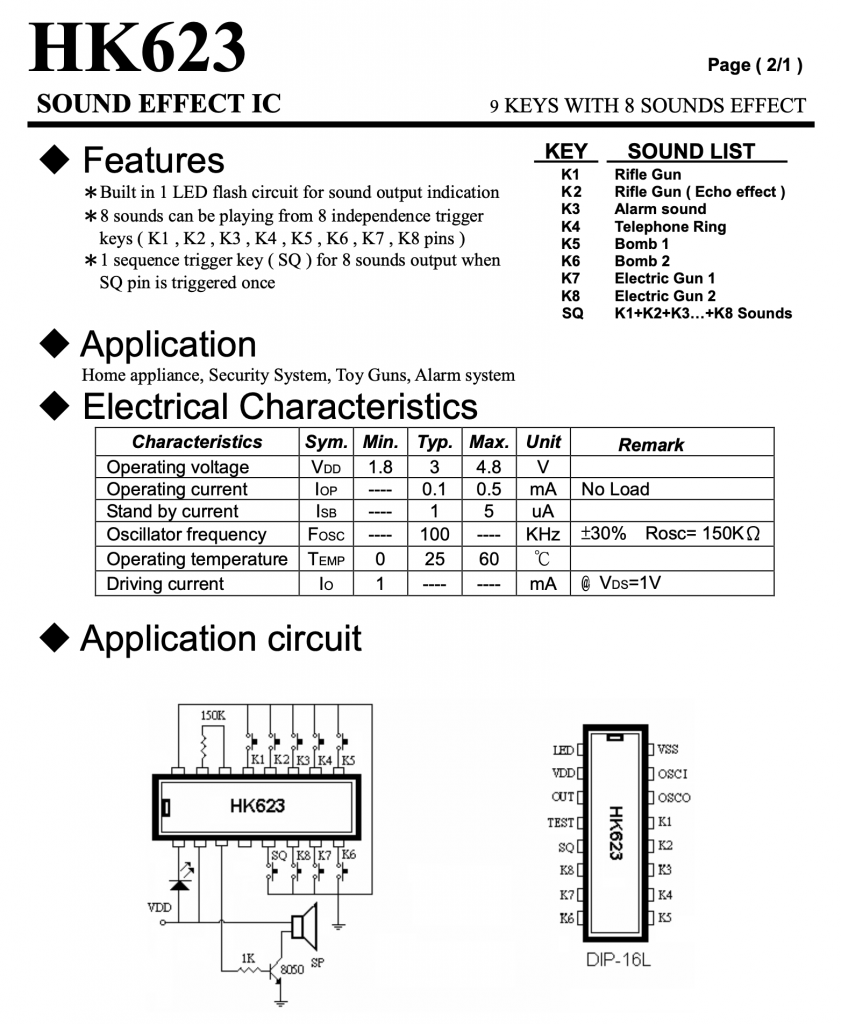
To make my dub siren I copied the data sheet application circuits almost exactly. The only change I made was to replace the timing resistor (“Rosc” in the datasheet) with a 1M pot in series with a 47k fixed resistor. I also added a 3.3 volt regulator so it could run off the standard 9V guitar pedal supply.
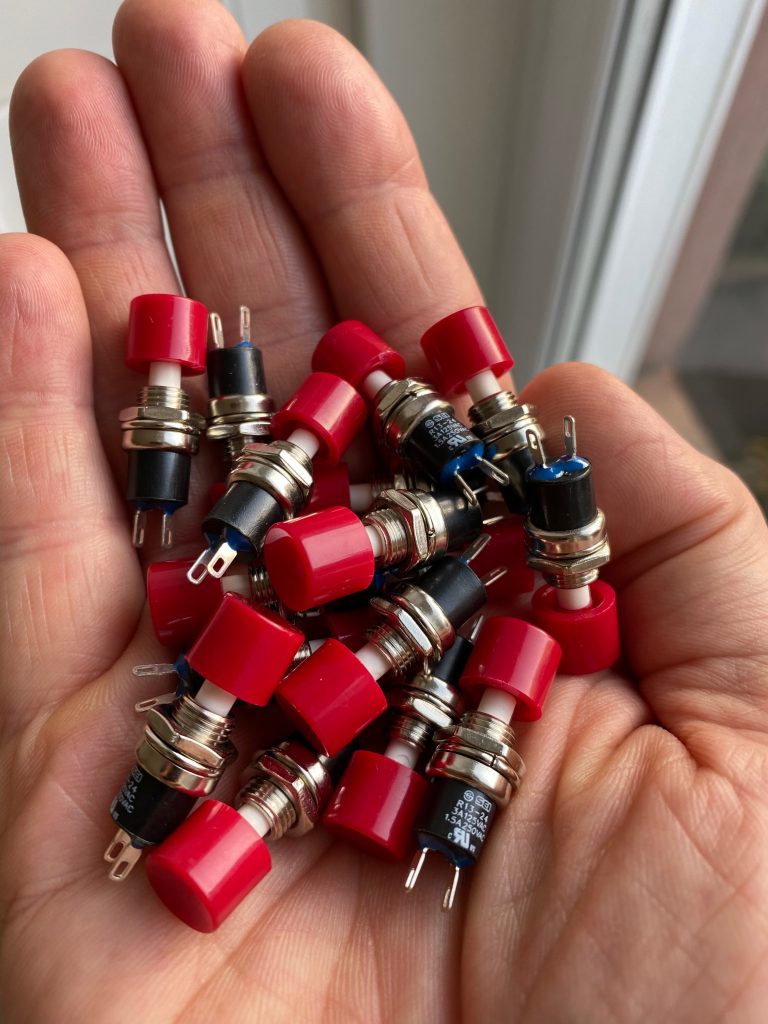
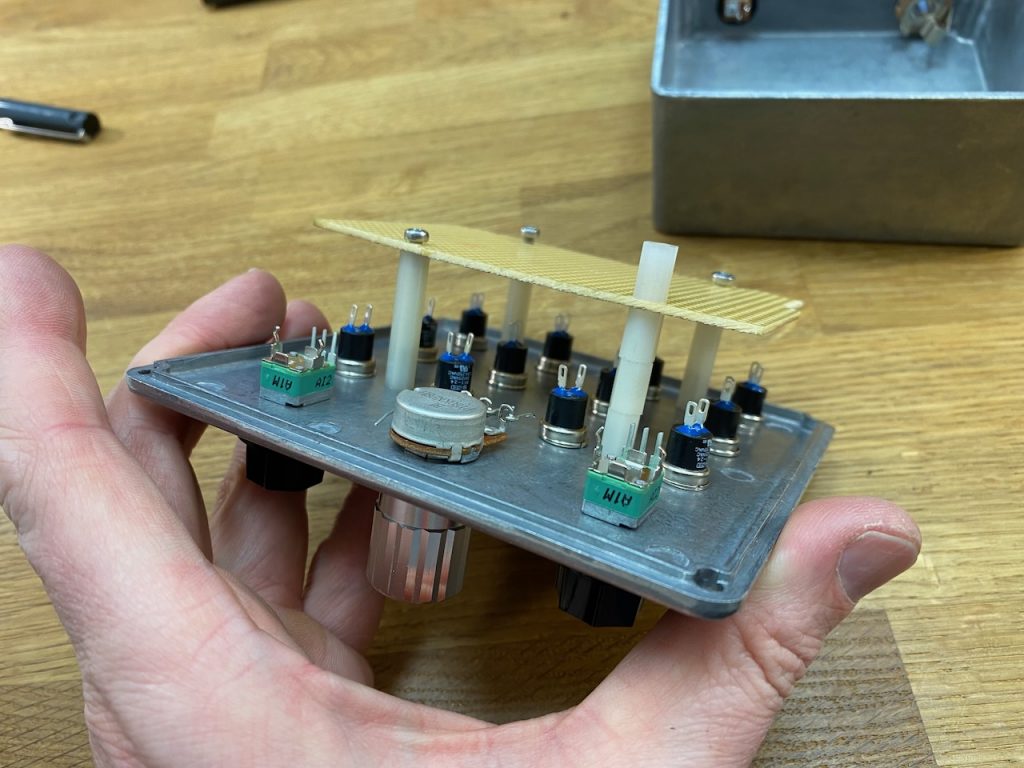
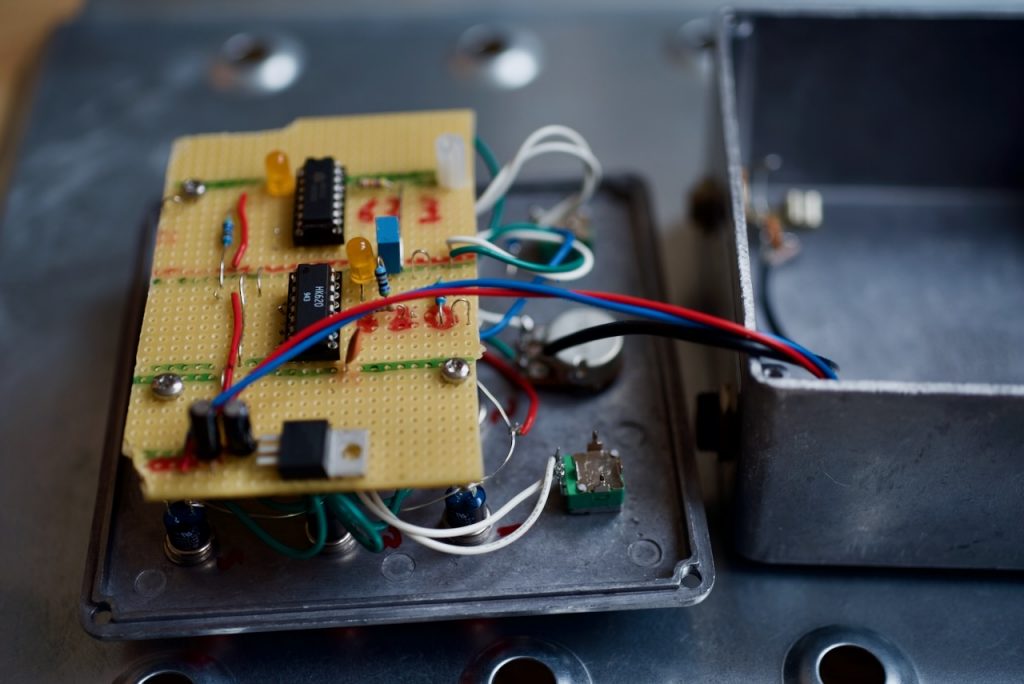
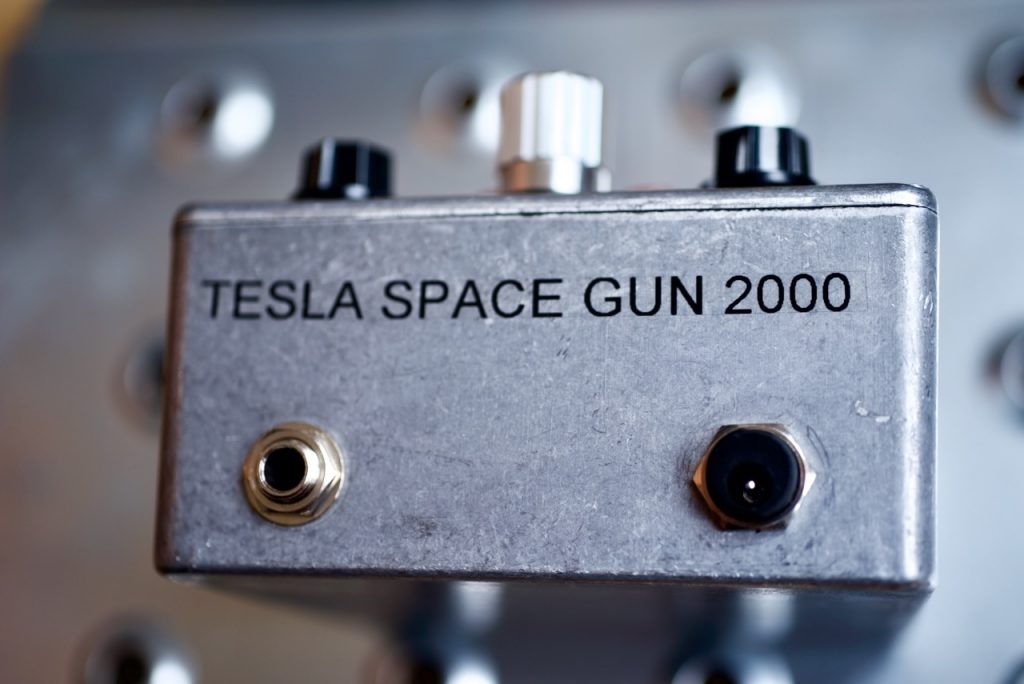
It sounds identical to the Rigsmith! Have they been shopping at Budgetronics too? 😀
In this part the FU-3 gets its final faceplate…
I started with a 3mm piece of aluminium pre-cut to size by Metal Supermarkets. The existing screw holes were easily replicated with PEM nuts, but the old faceplate vibrated horribly, so I wanted to add 2 more mounting bolts, and oh dear, the drilling for the top one just missed the panel.
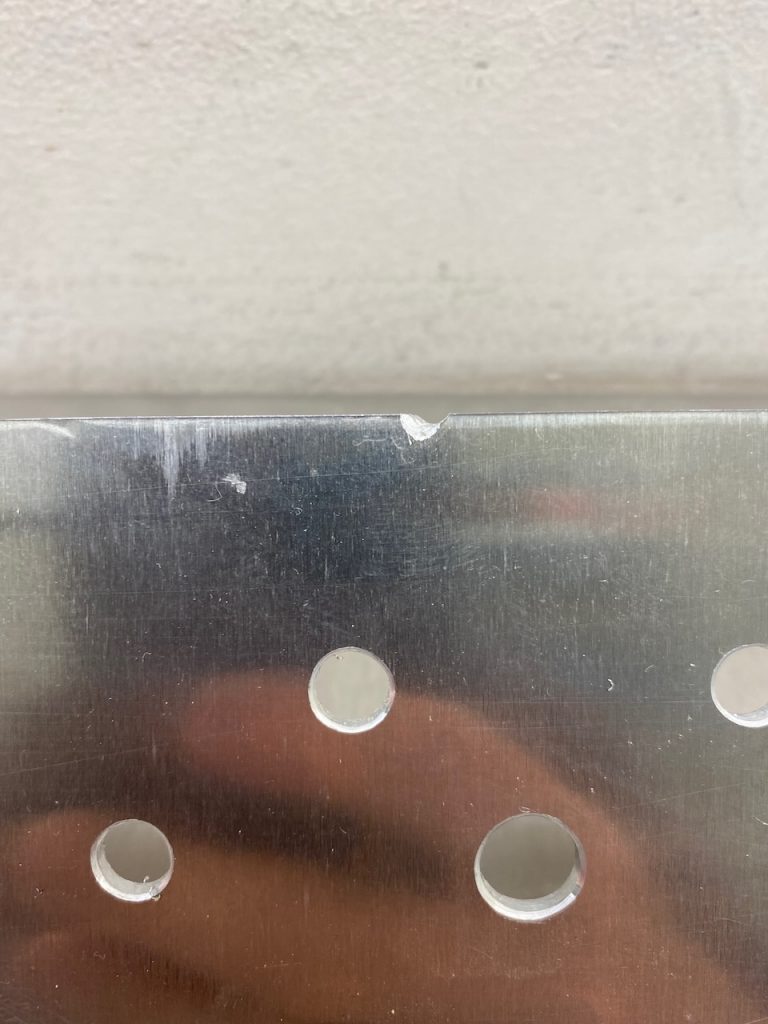
This was a perfect excuse to zap something with the TIG welder.

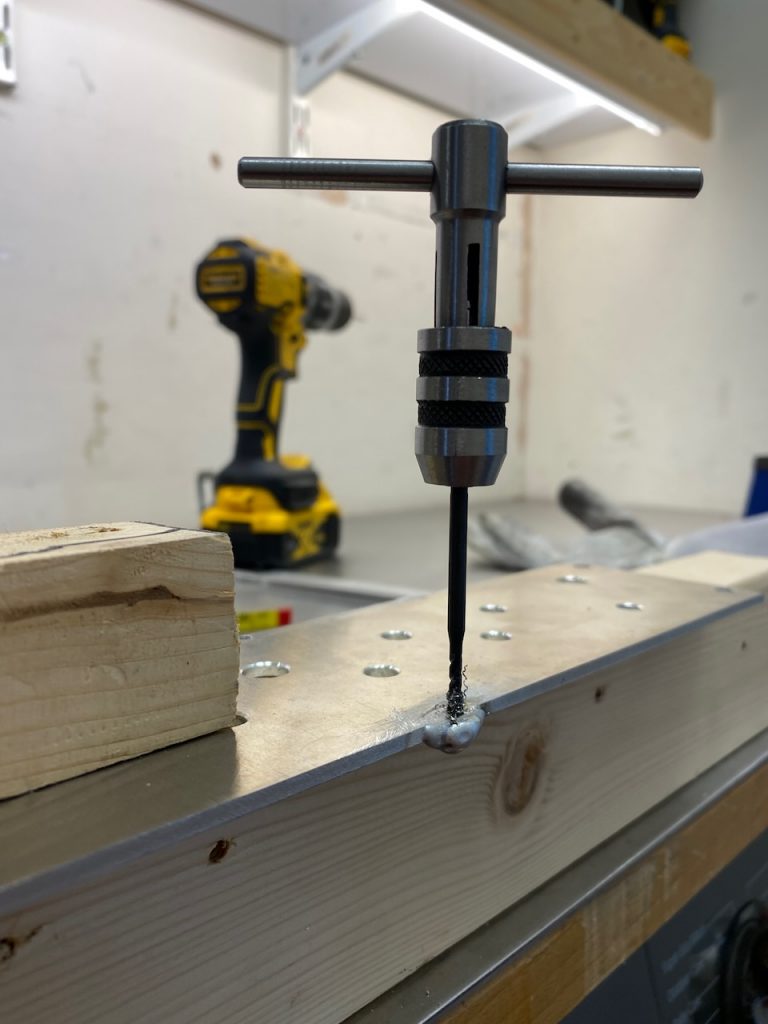
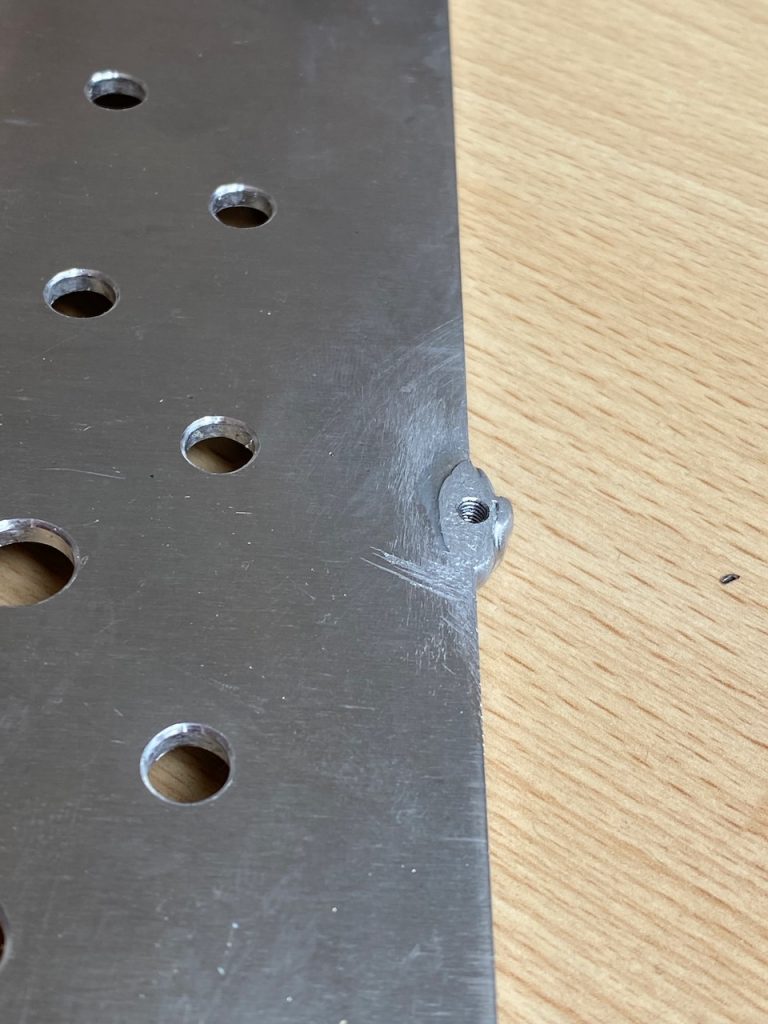
With this done, a coat of gold paint and a pasting with letter punches…
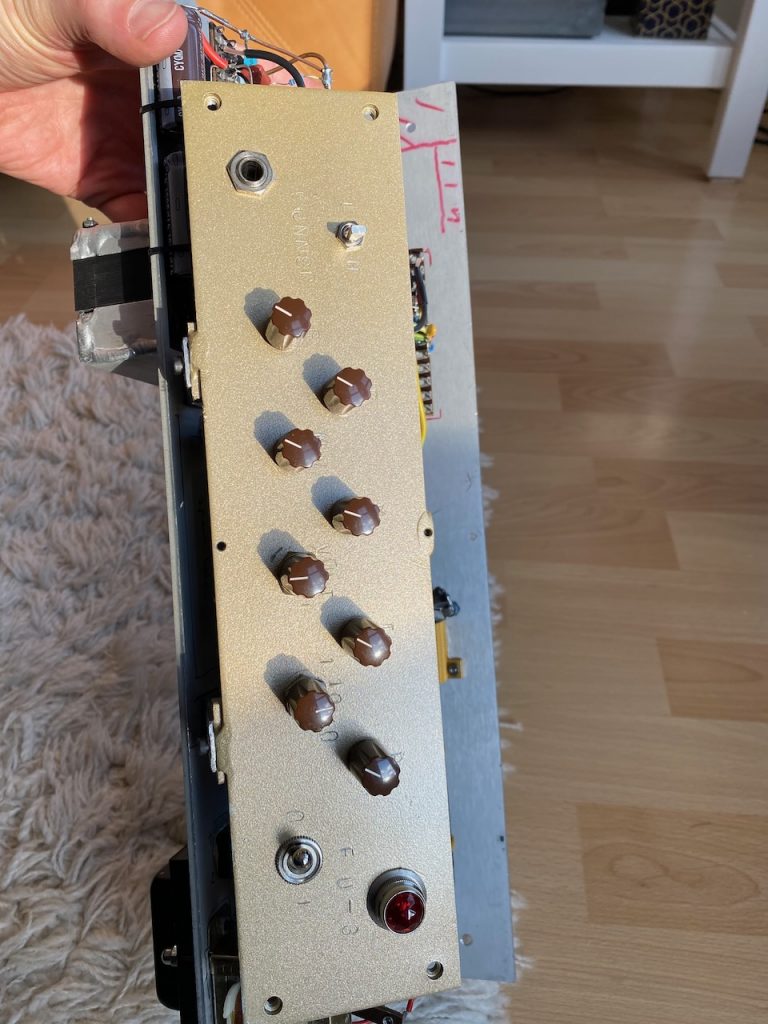
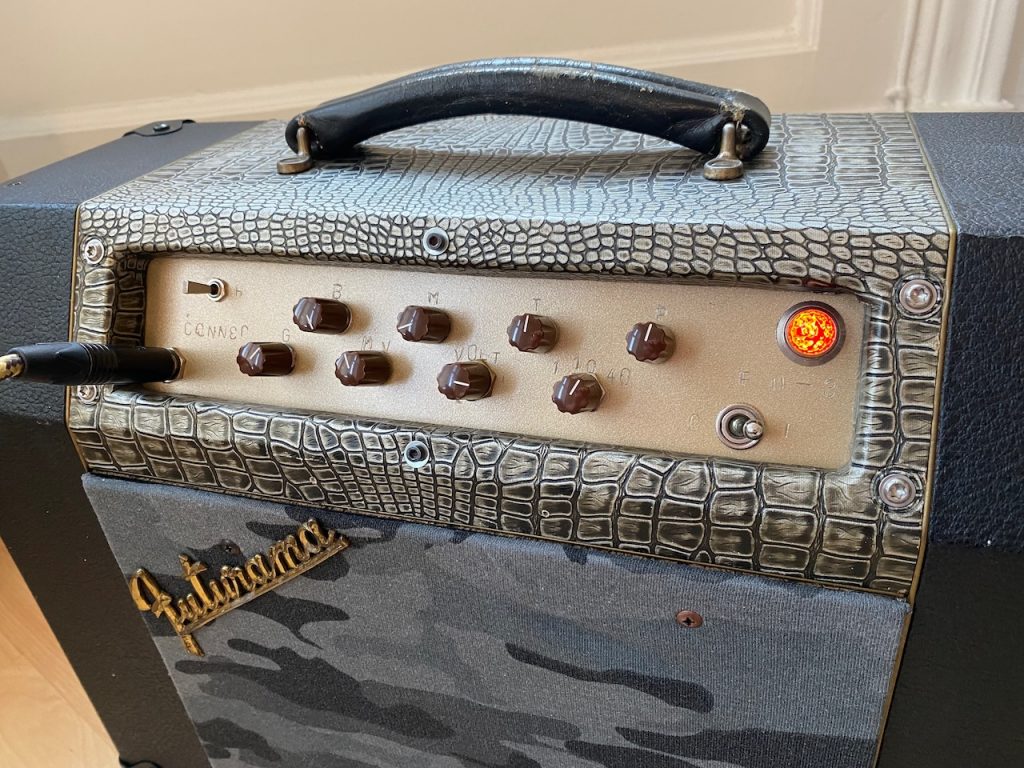
This bonkers event was organised by Extreme Electronics at Papplewick Pumping Station in Nottinghamshire. One of the few venues where Odin‘s full power can safely be deployed…
Check #Gaussfest on Twitter for more 🙂
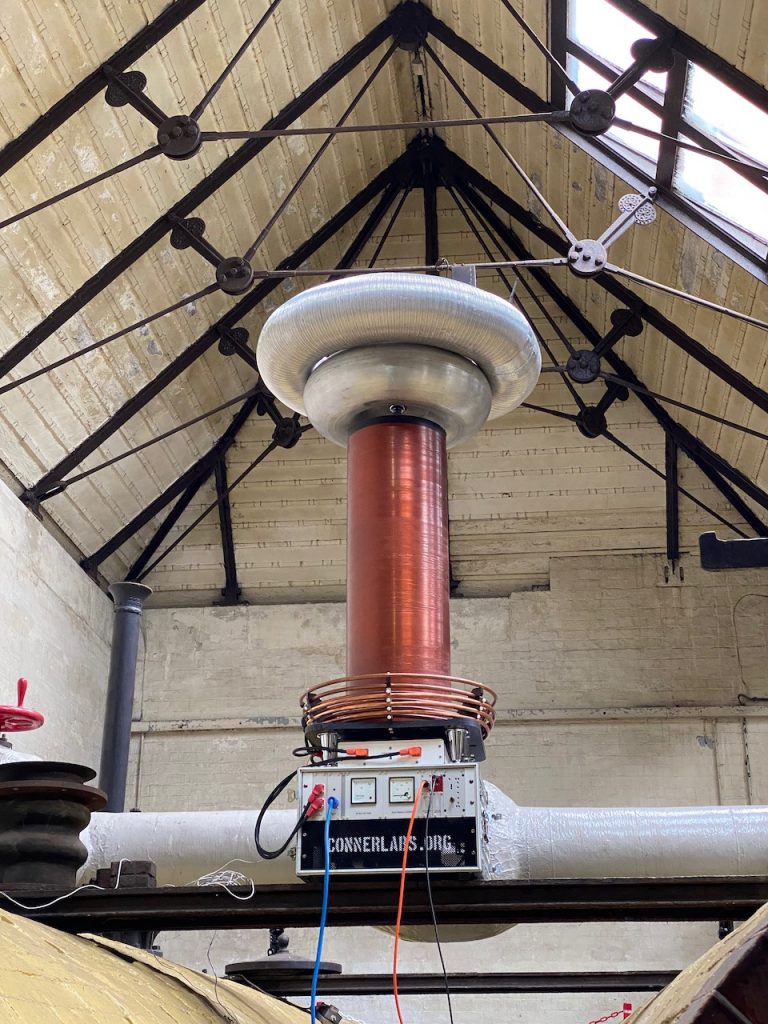

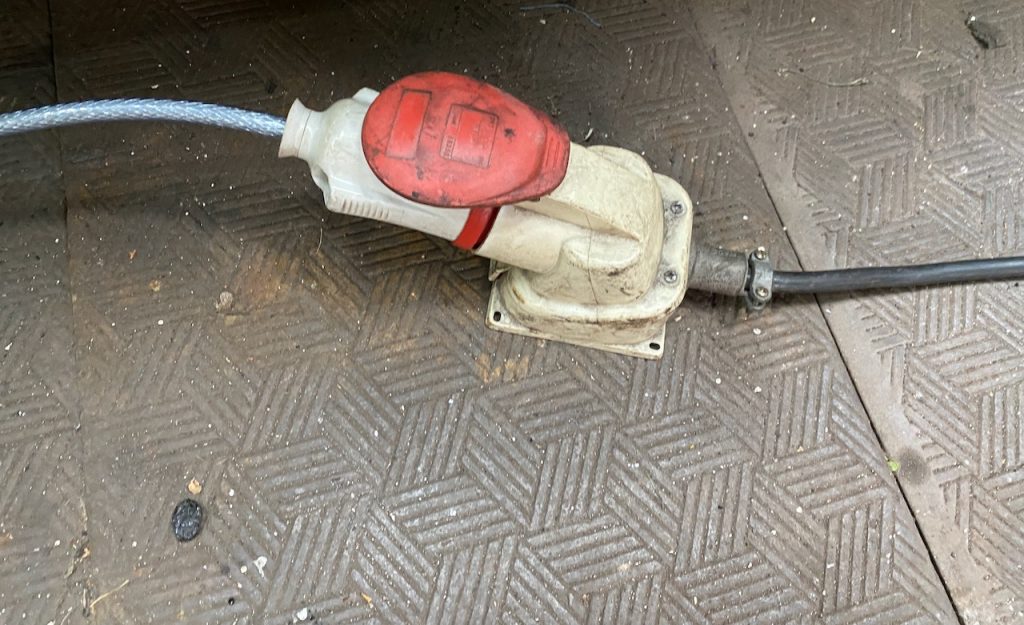
Look out for Mike “Electricstuff” with fingers in his ears
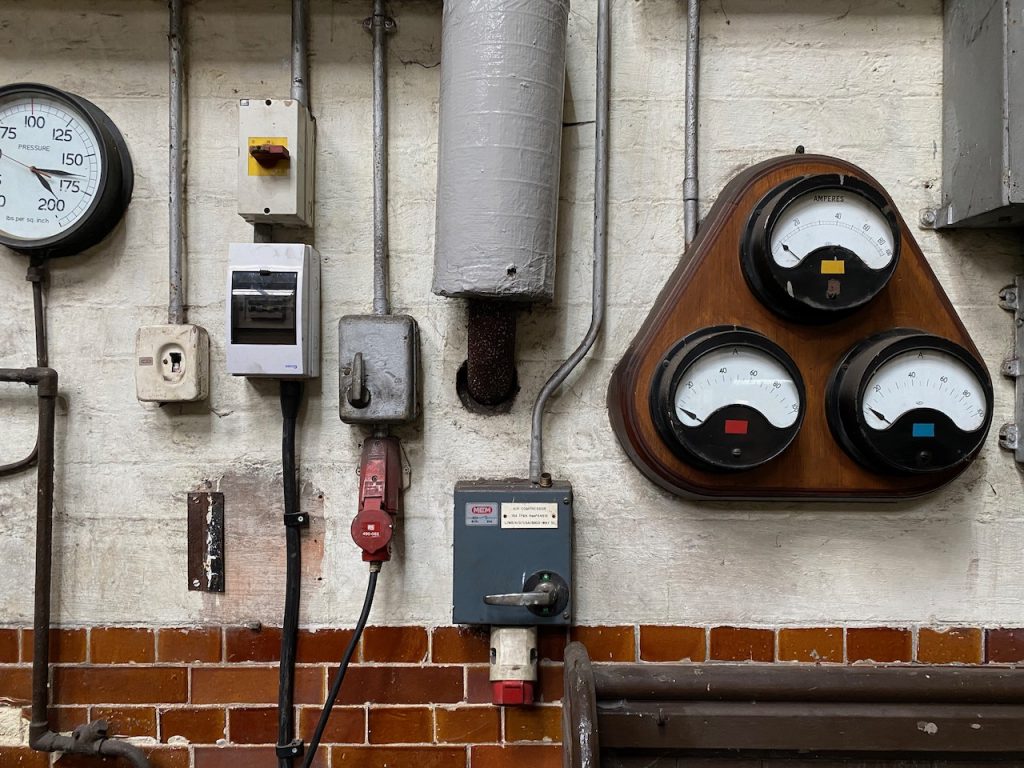
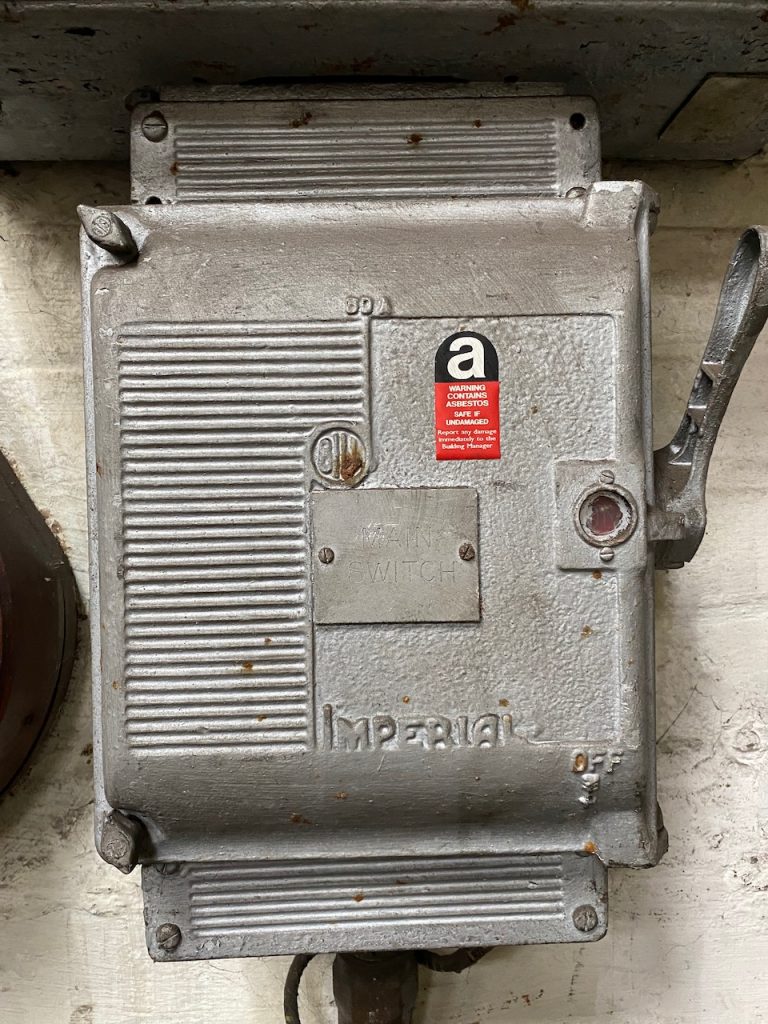


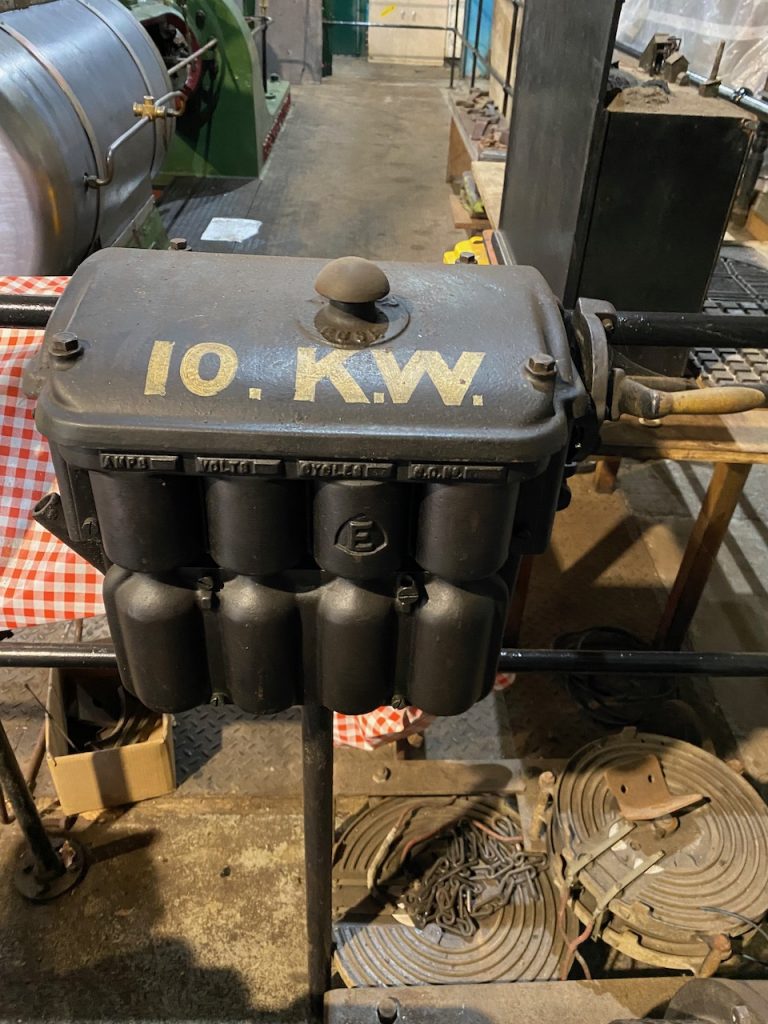
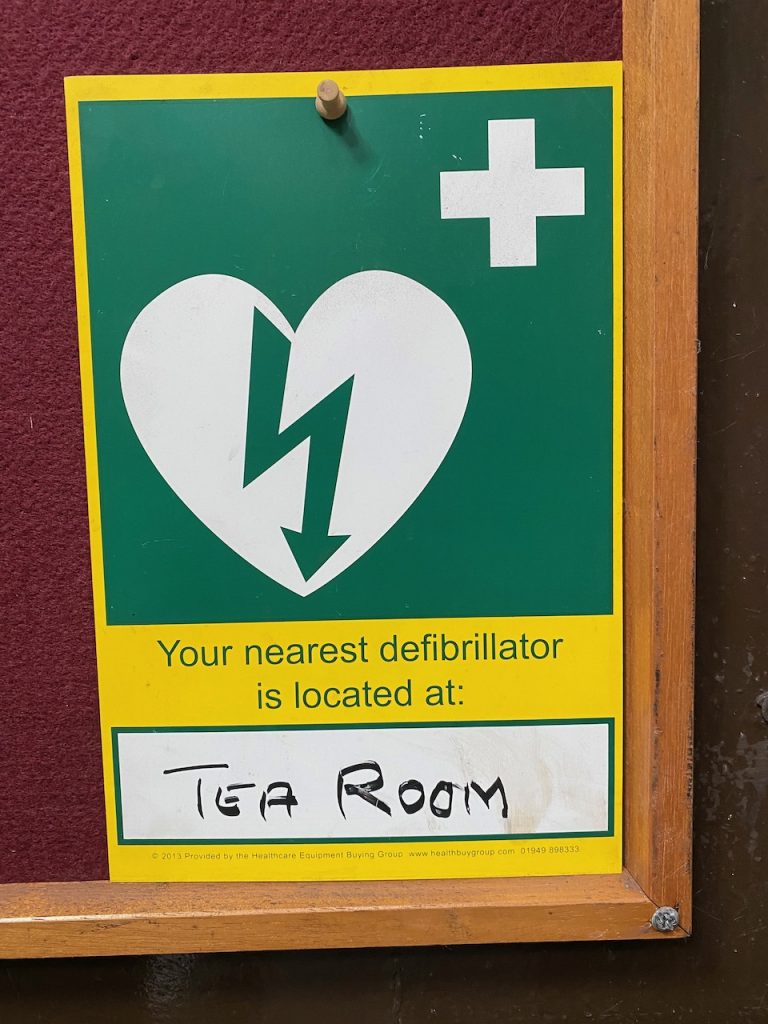
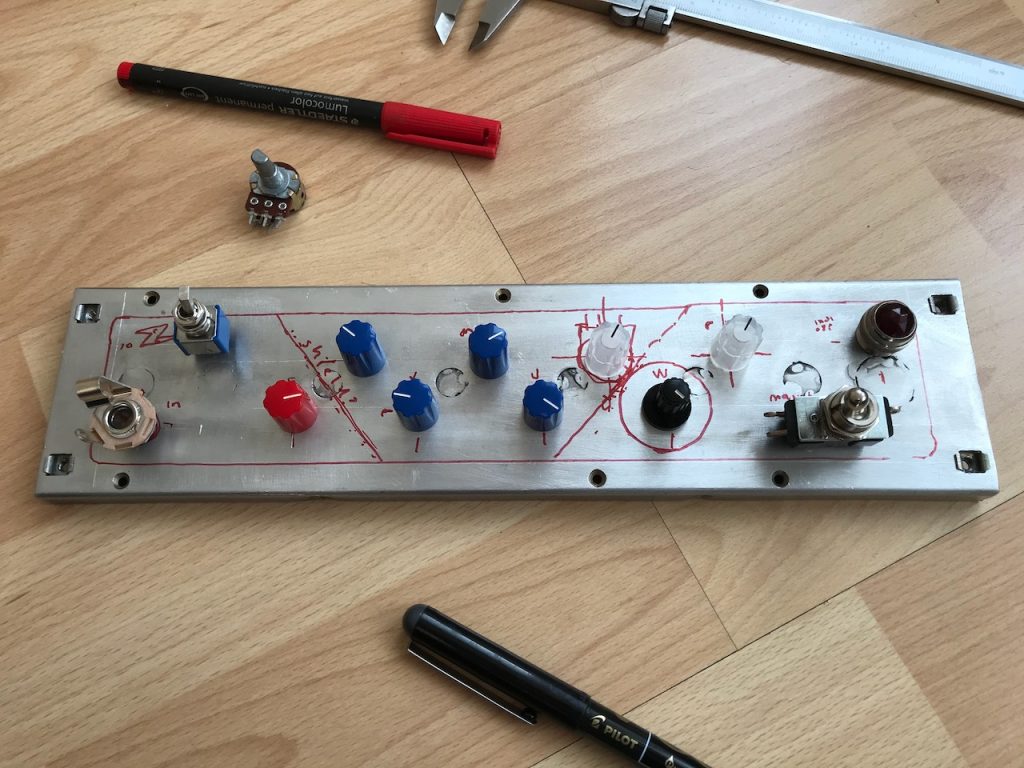
For more aluminium welding practice I decided to weld up the knob holes in the original Corvette front panel. The front looks OK but you don’t want to see the other side. I then made a new layout using MAD- permanent Marker Aided Design.
Next step was to finish wiring up the Marshall 2204 preamp.
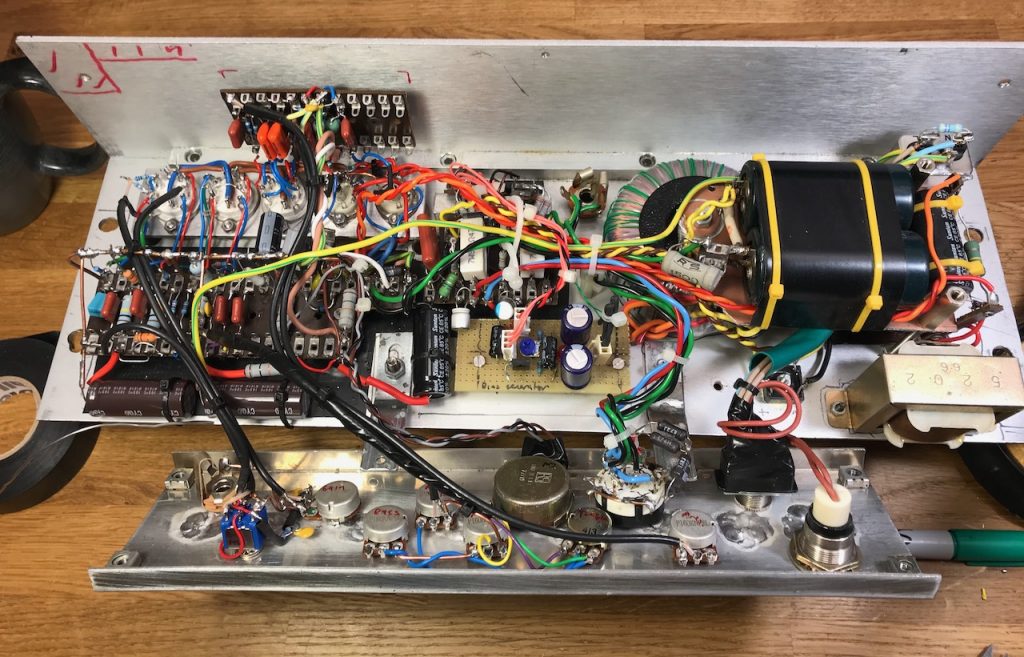
See earlier posts on the Ninja Corvette Hybrid if you’re puzzled by all the extra transistor stuff.
Yeah it makes the master volume Marshall racket 😀 This was recorded at the 1W power output setting.
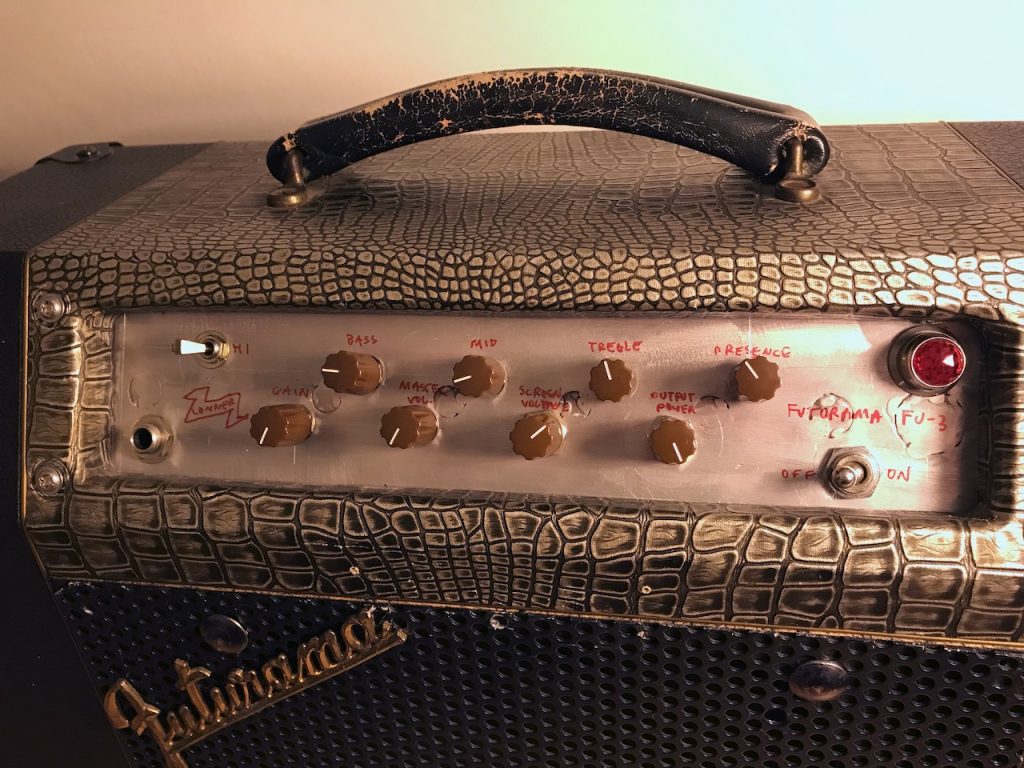
Got some matching knobs from Thonk. I will get round to making a completely new panel one day using the MAD one as a template.
With the chassis suitably butchered it was time to start on the electronics. I used Mark Huss’s schematic as a guide.
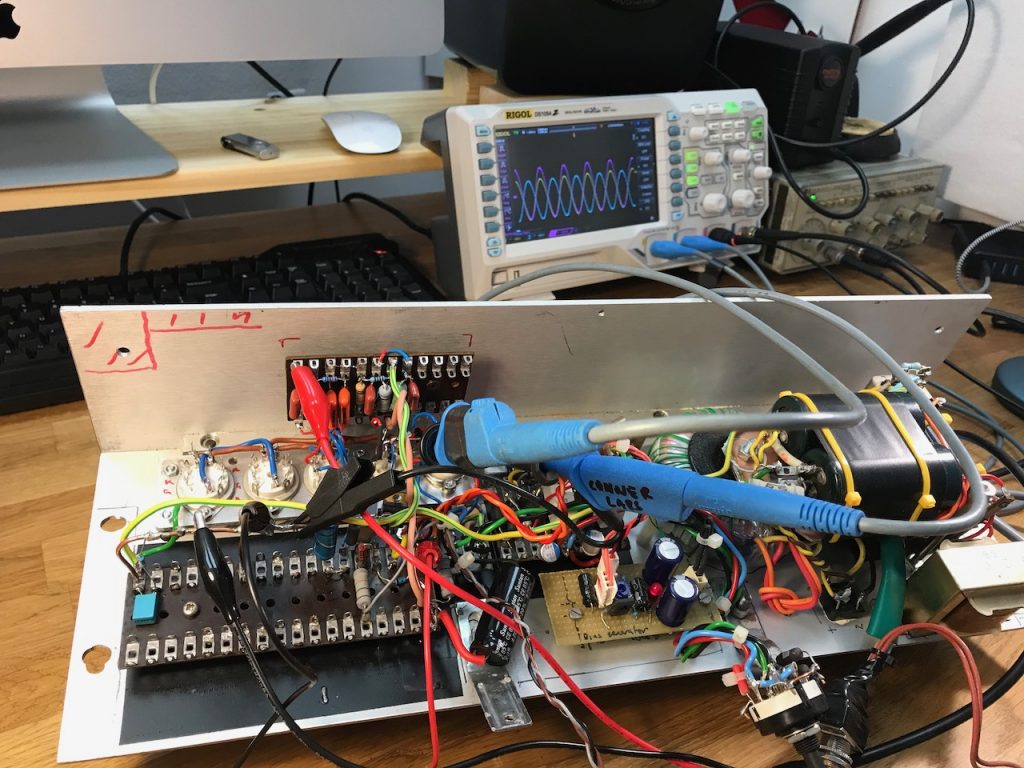
Soon the phase inverter and power amp were finished and working.
One big difference is that the 2204 uses negative feedback around the output stage while the original Corvette didn’t. So I decided to go with the NFB, and include the transistor output stage in the feedback loop too for an extra challenge.

It was perfectly stable first time! LOL just kidding… It suffered from high frequency parasitics-
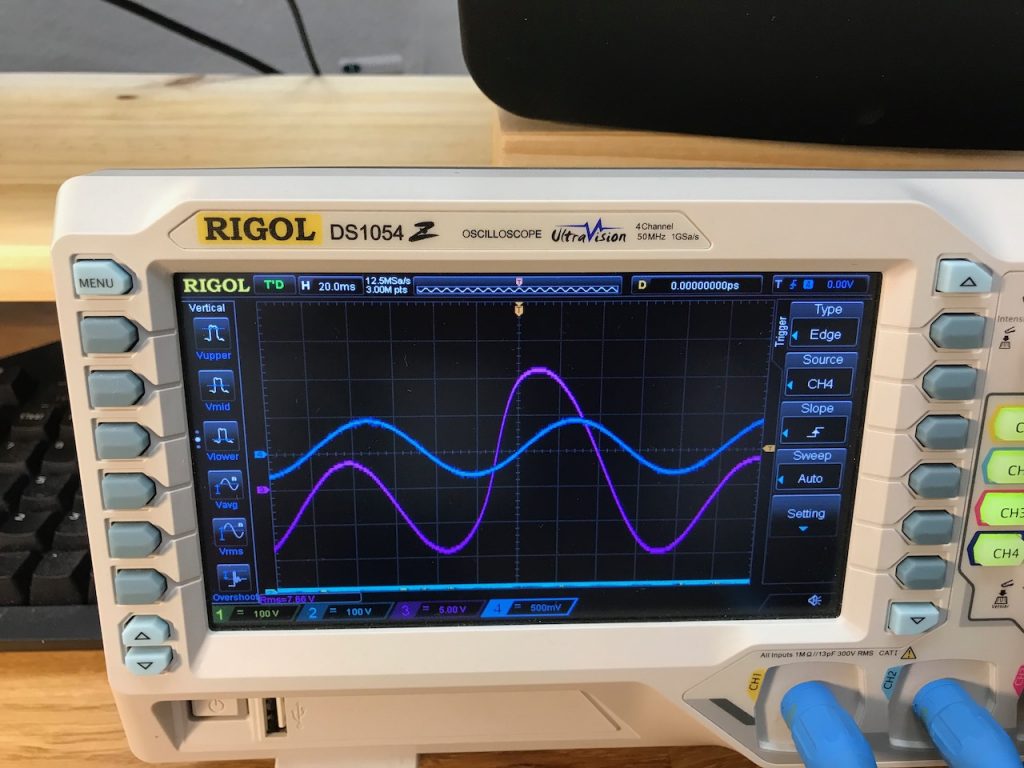
And these comically chaotic LF oscillations could be provoked by overdriving it at low frequencies.
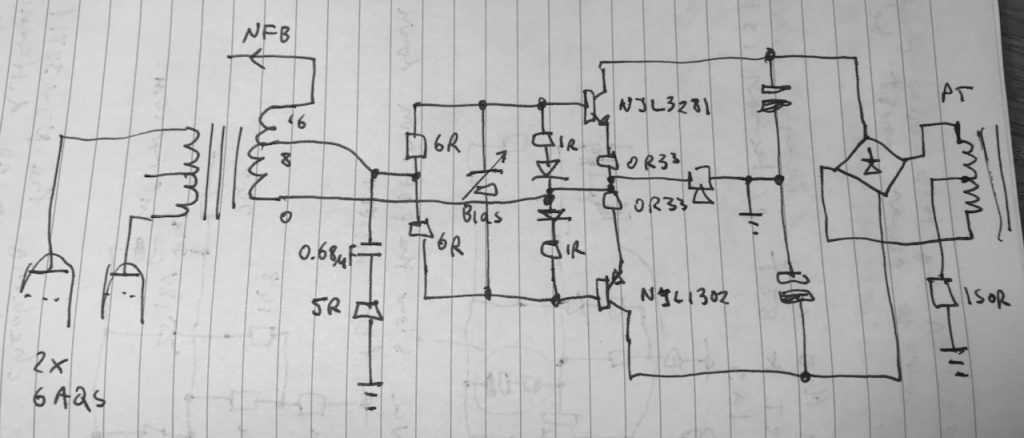
After much trial and error I ended up with something like this. The 0.68uF/5 ohm RC snubber killed the HF oscillations, and removing C17 and C18 (this schematic) stopped the motorboating. With these values it was just barely stable with the load disconnected and a 220k NFB resistor (vs 100k in the original 2203 circuit)
Note that when the transistor output stage is in play, the OPT secondary becomes bootstrapped and flies around with the speaker output, so the NFB takeoff point I used sees the output voltage of the transistor stage plus the output voltage of the valve OPT.
Removing C17 and C18 demanded quite a lot of extra current from the bias generator, but it seemed to deliver it no problem, so no changes were required there.
Resistor values were also changed to reduce the current gain of the transistor output stage, due to the increased output of the valve part of the circuit.
I got bored of the Ninja Corvette Hybrid and decided to transform it into something with a little more “FU”.
The plan I came up with was to strip out the valve part of the circuit and replace it with a clone of a Marshall 2204. This is a classic rock amp that I hadn’t had much experience with.
I decided to use 6AQ5 power tubes running off 250V, for a modest apartment-friendly power output. The 3 position power switching would be retained, giving power levels of 1W, 10W and 40W.
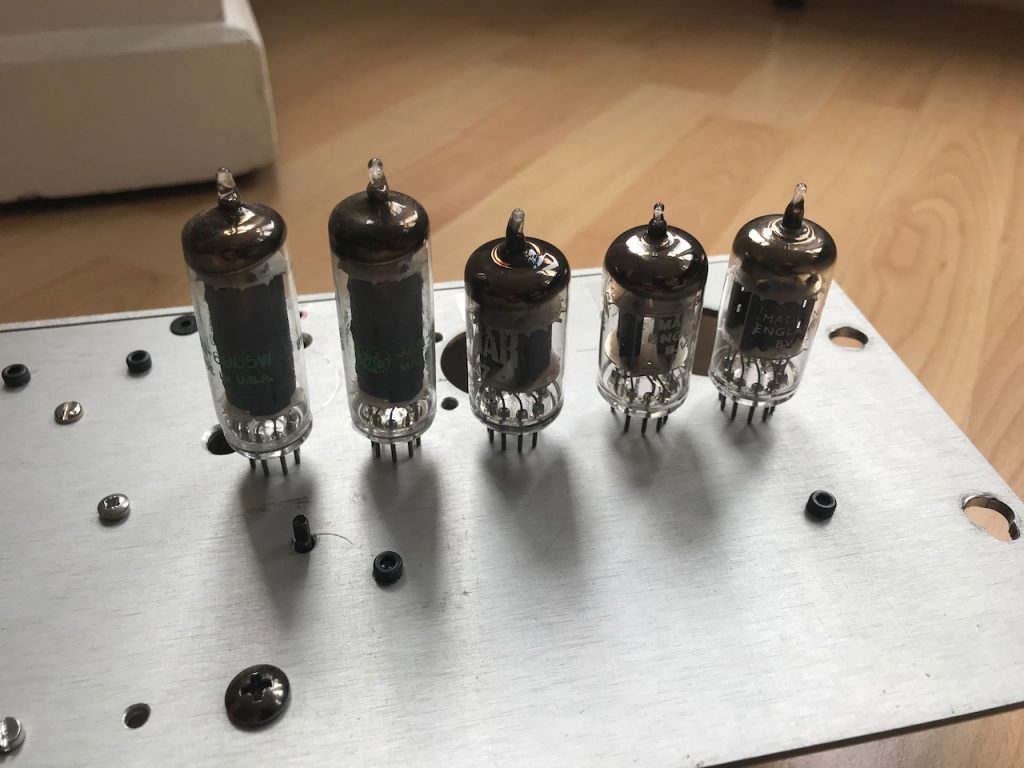
The Marshall 2204 circuit has 5 valves, but there are only 2 holes in the chassis…
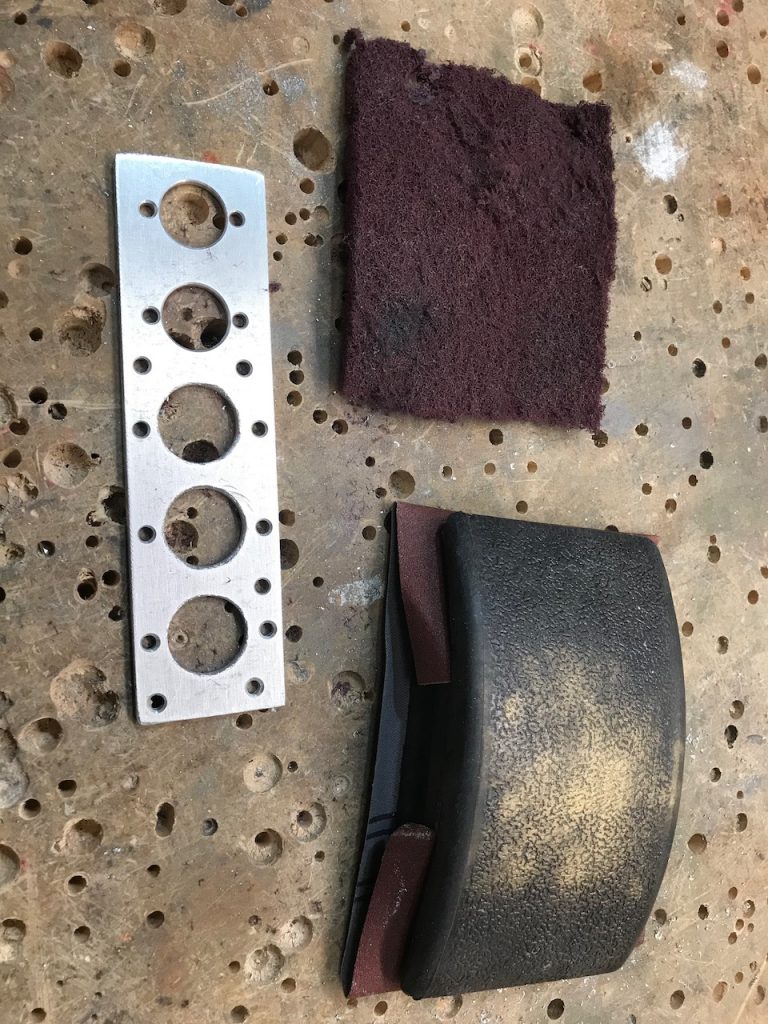

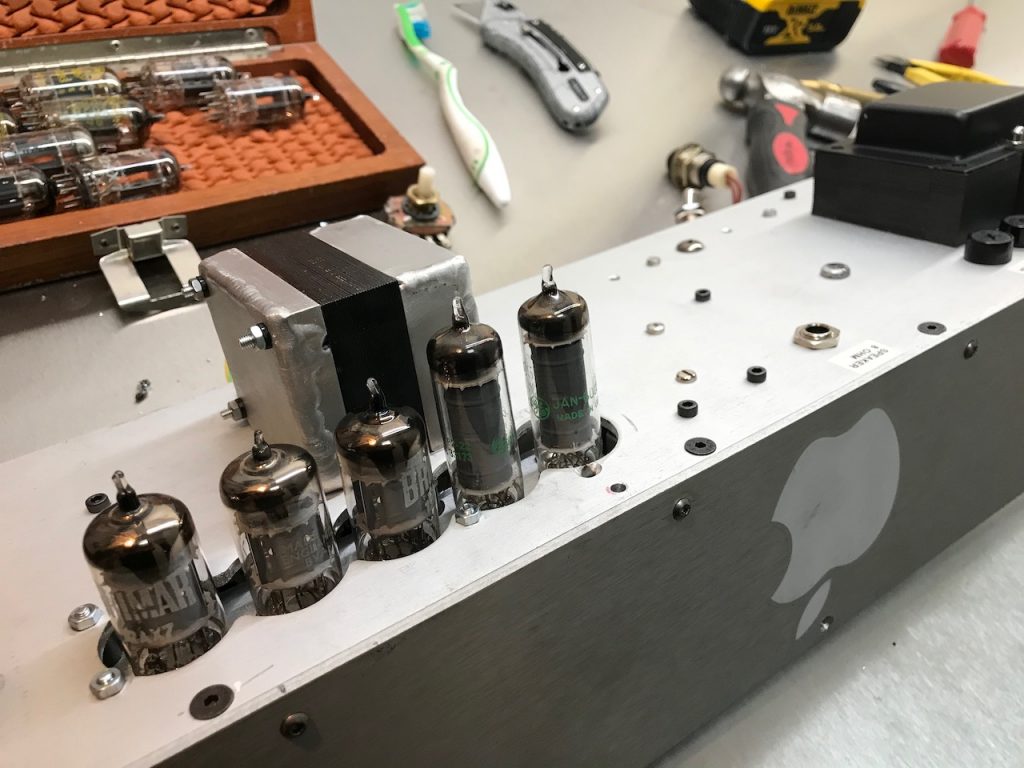
A new output transformer was also required, as the original one was single-ended. I used the cheapest PP one I could find at TAD. I also TIG welded a bracket for it, as I’ve been watching way too much Project Binky.
I got fed up with the thumb controls on the torch that came with my welder and decided to try a foot pedal. They are extremely expensive to buy so I decided to make one out of an unwanted wah pedal.

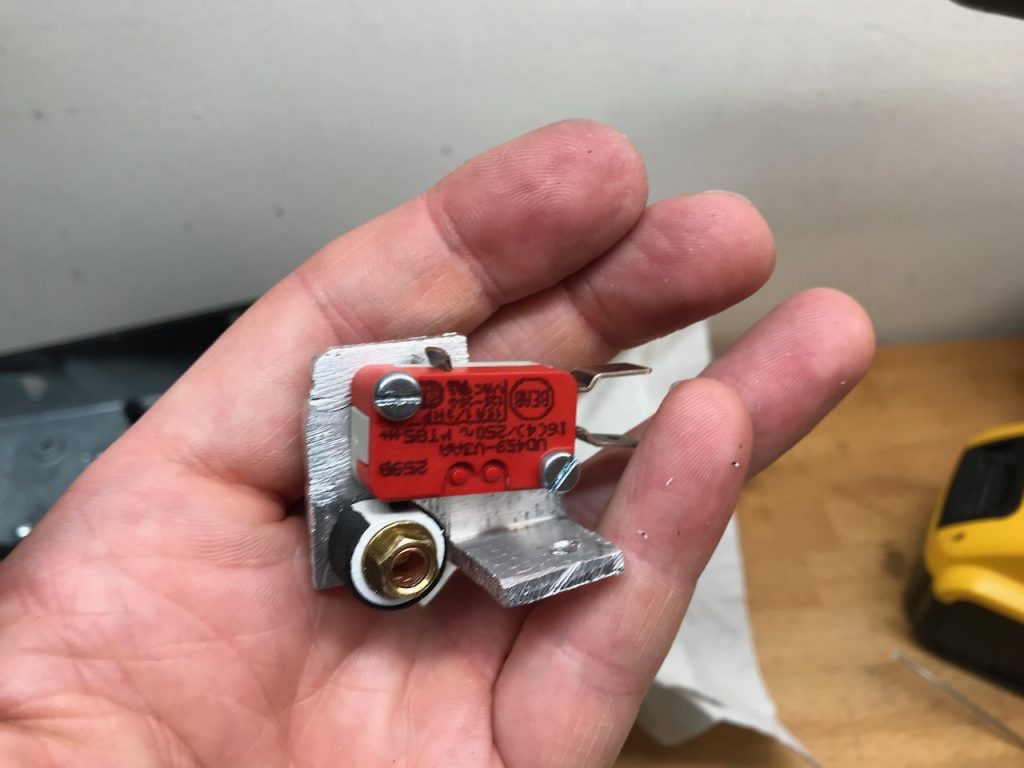
The main difference between a wah pedal and a TIG foot pedal is that the switch engages as you first apply pressure to the pedal, telling the welder to open the gas valve and go through its preflow and ignition cycle. Depressing the pedal further then controls the welding current.
To allow this operating mode I threw away the existing stomp switch and replaced it with a microswitch operated by a cam.

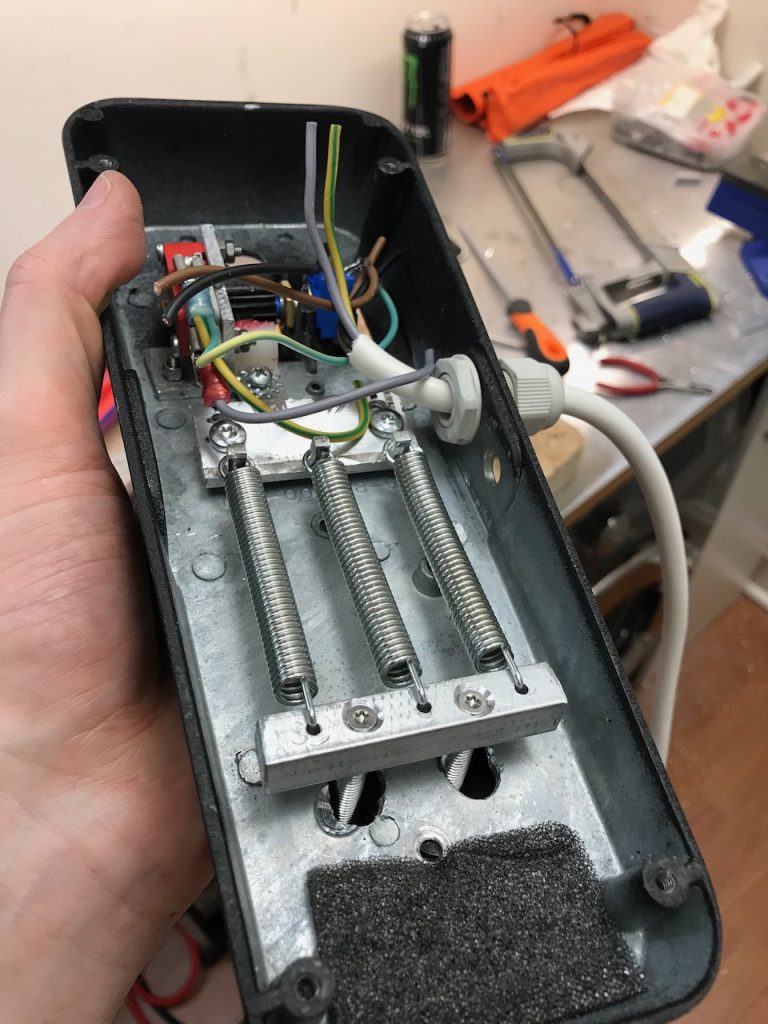
The other difference is that it needs a rather strong return spring to avoid igniting the welder by accident. I found this out by trial and error. D: Keeping with the musical instrument theme, I used some Strat tremolo springs from eBay.

I connected it to the socket for the hand controller as a spare plug for this was supplied with the welder. It thinks it is a torch with 1 button and thumbwheel. This seems to work fine, but I will try the foot pedal socket if I ever get round to figuring out the mating plug for it.
And the bead goes on…
I built the Tesla Fuzz especially for a collaboration between Arc Attack and some talented metal guitarists. And here they are!